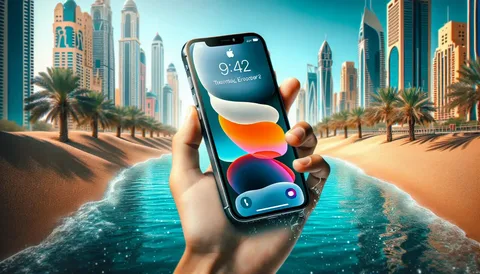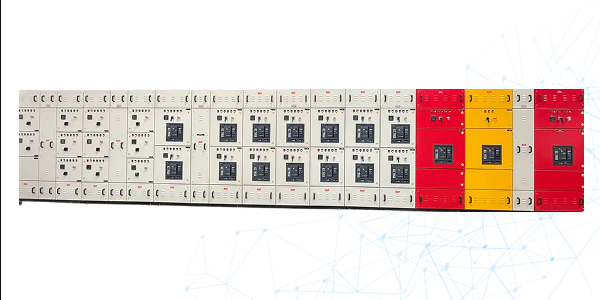Title: Understanding Video Memory in Modern IT Hardware
In the world of IT hardware, performance is everything. Whether you’re gaming, editing videos, or working with 3D modeling software, the efficiency and speed of your system can make or break your experience. One key component responsible for high-speed image rendering and smooth video playback is Video Memory—often referred to as VRAM (Video Random Access Memory). As a specialized segment of computer hardware, video memory is vital to how a system handles graphical data, and understanding its role can help consumers and professionals alike make informed hardware choices.
What Is Video Memory?
Video Memory is a dedicated memory type used by a computer’s graphics processing unit (GPU). Unlike the general system memory (RAM), VRAM is specifically designed to store and quickly access data needed to render images, videos, and 3D content. It acts as a high-speed buffer between the GPU and your display, enabling faster processing of visual data.
This memory is crucial for tasks involving large textures, high-resolution graphics, and dynamic visual environments, making it an essential aspect of modern IT hardware used in gaming, video editing, CAD, and deep learning applications.
The Evolution of Video Memory
Over the years, video memory has evolved dramatically—from early forms like SGRAM and DDR to advanced iterations like GDDR6 and HBM (High Bandwidth Memory). Each new generation of VRAM offers higher bandwidth and improved efficiency, allowing GPUs to process more data at faster speeds.
Here’s a quick overview of how VRAM has progressed:
-
SGRAM – Used in older graphics cards; offered modest performance.
-
DDR/DDR2 – Shared architecture with system RAM; became outdated quickly.
-
GDDR3 to GDDR6X – Popular in gaming and professional graphics cards, providing high transfer rates.
-
HBM & HBM2 – Used in high-end computing environments; offers stacked memory architecture for extreme performance.
Understanding the version of video memory in your computer hardware can help gauge its graphical processing potential.
How Video Memory Works
When you load a game, edit a 4K video, or render 3D models, large files—like textures, shadows, geometry, and effects—are temporarily stored in the VRAM. The GPU then accesses this memory to create and display visual output on your screen in real-time. The more VRAM available, the more data your system can hold close to the GPU, reducing the need to retrieve it from slower storage or main RAM.
This process enhances:
-
Frame rates in games
-
Speed in video rendering
-
Resolution support
-
Multi-monitor setups
Types of Video Memory
There are two primary types of video memory setups in IT hardware systems:
1. Dedicated Video Memory
Dedicated VRAM is exclusively available to the GPU. Found in most discrete graphics cards (like NVIDIA or AMD), it doesn’t share memory with the system RAM. This configuration offers optimal performance for graphic-intensive applications.
2. Integrated Video Memory
Integrated graphics (common in laptops and budget desktops) share system RAM as their video memory. While more economical, integrated memory is significantly slower and not ideal for demanding graphical tasks.
Why Video Memory Matters
Understanding and choosing the right video memory configuration is critical for a range of users, including:
Gamers
Modern games demand high-resolution textures and real-time effects. Insufficient VRAM leads to stuttering, low frame rates, or even game crashes.
Designers and Creatives
Applications like Adobe Premiere Pro, Photoshop, or Blender rely heavily on VRAM for rendering previews and final outputs. A powerful GPU with ample VRAM can drastically reduce processing times.
IT Professionals and System Builders
For those assembling or maintaining high-performance systems, selecting appropriate computer hardware includes evaluating the GPU’s VRAM to ensure it aligns with the user’s needs and workflow.
Factors That Affect Video Memory Usage
The actual VRAM usage varies based on:
-
Screen Resolution: Higher resolutions like 1440p or 4K consume more VRAM.
-
Texture Quality: Games or applications with ultra-high texture settings need more memory.
-
Number of Displays: Multiple monitors require additional VRAM to handle increased graphical data.
-
Ray Tracing & AI Features: Technologies like NVIDIA’s DLSS or ray tracing significantly increase VRAM usage.
How Much Video Memory Do You Need?
Determining how much VRAM you need depends on your use case:
-
Casual Use (1080p): 2GB–4GB of VRAM is sufficient.
-
Mid-Level Gaming & Editing (1440p): 6GB–8GB is ideal.
-
Professional Work & 4K Gaming: 10GB–16GB+ is recommended for smooth performance.
-
Enterprise & Deep Learning Tasks: 24GB+ with HBM2 is common in advanced systems.
Overestimating slightly is better than underestimating, as exceeding available VRAM can cause significant performance dips.
Optimizing Video Memory Usage
Even with ample VRAM, optimization ensures peak performance. Here are some tips:
-
Update GPU Drivers regularly to maintain compatibility and performance.
-
Adjust Texture Settings in games or software to match VRAM availability.
-
Use Monitoring Tools like MSI Afterburner to track VRAM usage in real-time.
-
Limit Background Processes that may consume GPU resources unnecessarily.
Proper optimization helps maximize your system’s potential without constant hardware upgrades.
Video Memory vs. System RAM
Though both serve memory functions, VRAM and system RAM operate very differently:
| Feature | Video Memory (VRAM) | System RAM |
|---|---|---|
| Purpose | Handles graphics & rendering | Manages general processing tasks |
| Location | On GPU | On motherboard |
| Speed | Faster for visual data | Slower for graphics |
| Usage | Textures, shaders, frame buffer | OS, software, background processes |
In IT hardware, balancing both is crucial. A high-end GPU with low RAM, or vice versa, may create performance bottlenecks.
Trends in Video Memory and Computer Hardware
As computing tasks become more graphic-intensive, video memory continues to grow in capacity and importance. Key trends include:
-
Increased VRAM in GPUs: New cards often feature 12GB–24GB as standard.
-
AI Acceleration: VRAM is vital for machine learning models run on GPUs.
-
Virtual Reality: VR platforms demand large memory buffers for immersive environments.
-
Streaming & Content Creation: Higher resolutions and formats like 8K increase memory requirements.
The future of computer hardware will undoubtedly see continued emphasis on video memory advancements.
How to Choose a Graphics Card Based on Video Memory
When selecting a GPU, consider the following:
-
Workload Type – Gaming, editing, 3D rendering, or enterprise computing.
-
Resolution Needs – 1080p gaming needs less VRAM than 4K.
-
Software Compatibility – Some creative software performs better with specific GPU brands.
-
Budget Constraints – Higher VRAM typically means a higher cost, but offers better long-term value.
Balancing performance, cost, and use case will help you find the perfect match within your IT hardware setup.
Common Misconceptions About Video Memory
“More VRAM Always Means Better Performance”
While higher VRAM can help, performance also depends on GPU architecture, memory bandwidth, and software optimization. A well-balanced 8GB card can outperform a poorly designed 12GB one.
“VRAM Is Upgradeable”
Unlike system RAM, VRAM is soldered onto the GPU. To upgrade VRAM, you need to replace the entire graphics card.
“VRAM Solves All Performance Issues”
Other components—CPU, SSD, and system RAM—also play crucial roles. A bottleneck in any of these can hinder overall performance, regardless of available VRAM.
Conclusion
Video Memory is a core component of computer hardware that significantly affects how visuals are processed and displayed. Whether you’re a gamer, content creator, or IT professional, understanding VRAM’s role can guide smarter system configurations and better hardware investments. As visual demands grow in modern computing, so does the importance of choosing the right GPU with suitable video memory.
In a fast-evolving landscape of IT hardware, knowledge is power—and in this case, the power lies in the memory that makes your visuals come alive.














Post Comment